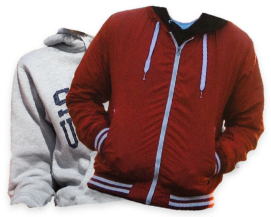The fusion of fashion and technology has revolutionized the apparel industry in numerous ways, from design and production to marketing and retail. In the digital age, the fashion industry has embraced new technologies, reshaping how clothing is created, sold, and worn. Let’s explore the significant role technology plays in the modern fashion landscape.
1. The Shift to Digital Fashion Design
Technology has transformed the way designers conceptualize and create clothing, making design processes faster, more precise, and more innovative.
- 3D Design Software: Designers are increasingly using 3D design tools like CLO and Browzwear to create digital prototypes of garments. These tools allow them to visualize how fabrics will drape and move on the body before the garments are even physically produced. This not only reduces the need for physical samples but also speeds up the design iteration process.
- Computer-Aided Design (CAD): CAD software has become a cornerstone in the fashion industry, enabling designers to experiment with patterns, textures, and colors digitally. This technology helps create detailed designs with precision and reduces material waste.
- Virtual Fashion Shows: Digital fashion shows, such as those popularized during the COVID-19 pandemic, have allowed designers to present their collections in virtual spaces. These shows, often live-streamed on platforms like YouTube and Instagram, allow a global audience to participate in what was once an exclusive event.
2. Smart Fabrics and Wearable Technology
The integration of technology into clothing itself has given rise to smart textiles and wearable technology, bridging the gap between fashion and function.
- Smart Fabrics: Innovations in fabric technology have led to the creation of smart textiles that can change color, light up, or even monitor vital signs. For example, some fabrics are embedded with sensors that track the wearer’s heart rate, temperature, and movement, merging fashion with health monitoring.
- Wearable Technology: Devices like smartwatches, fitness trackers, and even smart jewelry are blurring the lines between fashion and tech. These wearables not only offer practical benefits but are also designed to be stylish accessories. Fashion brands have started collaborating with tech companies to produce fashionable versions of wearable devices, such as the Apple Watch Hermes edition.

3. E-Commerce and Digital Retail
The rise of online shopping has dramatically changed the way consumers buy clothing, pushing the fashion industry to adapt to new digital retail strategies.
- E-Commerce Platforms: Websites like Amazon, ASOS, and Zalando have become major players in the fashion retail market, offering consumers the convenience of shopping from anywhere at any time. Brands have also developed their own e-commerce platforms, allowing direct-to-consumer sales, bypassing traditional retail models.
- Virtual Fitting Rooms: One of the biggest challenges of online shopping is the inability to try on clothes before purchasing. To address this, many fashion brands have started using augmented reality (AR) and virtual fitting rooms, where customers can virtually “try on” clothes using their smartphone cameras or specialized apps. This technology helps reduce return rates and enhances customer satisfaction.
- AI-Driven Personalization: Artificial intelligence (AI) is being used to enhance the online shopping experience by offering personalized recommendations. By analyzing browsing history, purchase patterns, and even social media activity, AI algorithms can suggest clothing items tailored to individual tastes and preferences.
4. Sustainable Fashion Through Technology
Sustainability is a growing concern in the fashion industry, and technology is playing a crucial role in addressing environmental challenges.
- 3D Printing in Fashion: 3D printing technology is allowing designers to create intricate garments with minimal waste. This method reduces excess material use and energy consumption, contributing to more sustainable fashion practices. Some brands are also exploring 3D-printed accessories, such as shoes and jewelry, which can be customized to fit the buyer perfectly.
- Blockchain for Transparency: Blockchain technology is being used to improve transparency in the fashion supply chain. By tracking the journey of materials from production to sale, blockchain allows consumers to verify the ethical sourcing of garments. This is particularly important for customers who prioritize sustainability and ethical practices in their purchasing decisions.
- Recycling and Upcycling Technologies: Advances in recycling technology are enabling brands to break down old fabrics and create new garments from recycled materials. Additionally, upcycling, which involves transforming waste materials into new products, is being facilitated by technological innovations in fabric processing.
5. The Rise of Fashion Tech Startups
The convergence of fashion and technology has given rise to numerous startups that are disrupting traditional fashion business models.
- Rent the Runway: This digital platform allows users to rent designer clothing for a fraction of the cost of buying it. By leveraging technology to manage inventory, track customer preferences, and offer personalized recommendations, Rent the Runway has become a pioneer in the fashion rental industry.
- Stitch Fix: This online personal styling service uses data analytics and AI to curate clothing selections for customers based on their style preferences, body type, and past purchases. The company’s technology-driven approach to personal styling has garnered a large customer base, showcasing how data can drive fashion decisions.
- The Fabricant: A pioneer in the digital fashion space, The Fabricant creates virtual clothing that can be “worn” in digital environments. With the rise of virtual worlds and the metaverse, digital fashion is becoming a growing market, offering brands a new frontier to explore.
6. Fashion and Augmented Reality (AR)
AR is rapidly becoming a tool for enhancing both the shopping experience and fashion marketing.
- AR Shopping Experiences: Fashion brands are incorporating AR features into their apps and websites to allow customers to visualize how clothes, shoes, or accessories will look on them before making a purchase. Gucci, for example, introduced an AR feature where customers can see how different sneakers look on their feet using their phone cameras.
- AR in Fashion Marketing: AR is also being used in fashion marketing campaigns to create interactive experiences. Some brands have used AR filters on platforms like Instagram, where users can virtually try on products or see how specific clothing items would fit into their wardrobe. These immersive experiences engage customers and create a stronger connection with the brand.

7. Artificial Intelligence in Fashion
AI is transforming the way fashion companies operate, from predicting trends to improving customer service.
- Trend Forecasting: AI-powered trend forecasting tools analyze vast amounts of data from social media, fashion blogs, and search engine queries to predict upcoming fashion trends. This allows brands to stay ahead of the curve and respond to consumer demands more effectively.
- Inventory Management: AI is also being used to optimize inventory management, helping retailers reduce overstock and minimize waste. By predicting which items will sell well and in what quantities, AI can help fashion brands make smarter production decisions, contributing to more sustainable practices.
- Chatbots for Customer Support: Many fashion brands have integrated AI chatbots into their websites and apps to provide instant customer support. These chatbots can assist with product recommendations, answer questions about sizing or availability, and even help track orders, improving the overall customer experience.
8. Fashion in the Metaverse and Virtual Reality (VR)
As the concept of the metaverse gains popularity, the fashion industry is starting to explore opportunities in virtual worlds.
- Virtual Fashion Shows and Stores: Some fashion brands are creating immersive VR experiences where users can attend virtual fashion shows or explore digital versions of their stores. These experiences allow brands to engage with tech-savvy consumers in new ways, offering an innovative twist on traditional retail and event formats.
- Digital Clothing for Avatars: In virtual worlds and gaming platforms like Fortnite or Roblox, digital clothing is becoming a booming market. Fashion brands are collaborating with these platforms to sell virtual apparel that users can purchase for their avatars, opening up a new revenue stream for the industry.
9. The Social Media-Fashion Technology Nexus
Social media has become an essential tool for fashion brands, and technology is enhancing this relationship.
- Shoppable Posts: Platforms like Instagram and Pinterest have introduced shoppable posts, allowing users to purchase products directly from their social media feeds. This seamless integration of shopping into social media reduces the steps between discovery and purchase, driving higher sales for fashion brands.
- Influencer Marketing and Data Analytics: Social media influencers play a huge role in driving fashion trends, and technology allows brands to track the performance of influencer campaigns with data analytics. By analyzing engagement rates, conversion metrics, and follower demographics, brands can refine their marketing strategies for better results.
10. The Future of Fashion and Technology
The future of fashion will undoubtedly be shaped by continued advancements in technology. Some trends to watch include:
- AI-Designed Clothing: Designers are beginning to experiment with AI to create clothing. By inputting specific parameters, AI algorithms can generate unique designs, which can then be produced with minimal human intervention.
- Sustainability Tech: As sustainability becomes a bigger priority, technologies that reduce waste, improve recycling, and enhance transparency in the fashion supply chain will continue to grow.
- Virtual Fashion: As digital worlds expand, so will the market for virtual fashion. We may see fashion brands launching virtual-only collections, with customers purchasing digital clothing to wear in the metaverse.
Conclusion: Technology as a Game-Changer in Fashion
In the digital era, technology is reshaping every aspect of the fashion industry, from design and production to retail and marketing. Innovations like 3D printing, AI, AR, and blockchain are creating new opportunities for creativity, sustainability, and customer engagement. As technology continues to evolve, so too will its impact on the fashion world, driving the industry toward a more digital, efficient, and innovative future.


